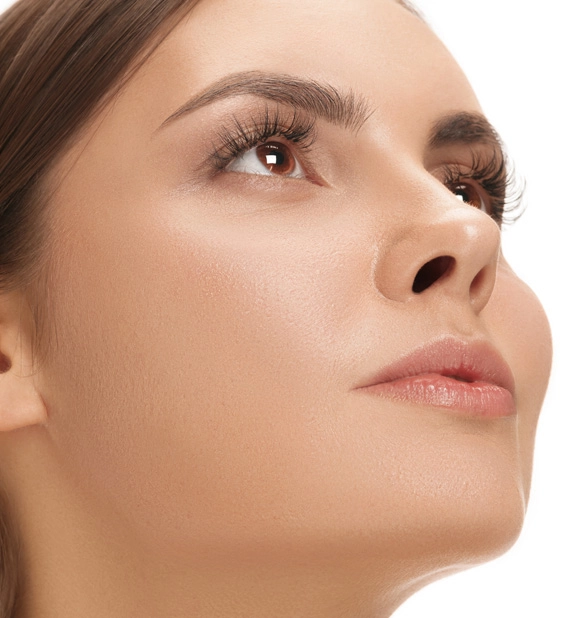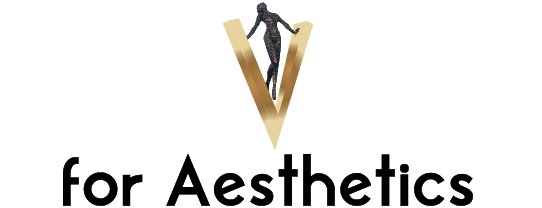What is a Revision Rhinoplasty?
Revision rhinoplasty, often referred to as a secondary rhinoplasty or nose revision surgery, is a surgical procedure performed to correct or improve the results of a previous rhinoplasty. This type of surgery is typically more complex than the initial rhinoplasty due to the changes already made to the nasal structure, which might include scar tissue or altered anatomy. The goal of revision rhinoplasty is to address issues such as aesthetic dissatisfaction, breathing difficulties or functional problems that have arisen from the first surgery.
It requires a high level of expertise and is often performed by a revision rhinoplasty specialist or best revision rhinoplasty surgeon who is experienced in these more challenging cases. Revision rhinoplasty aims to achieve a balanced and harmonious nose that complements the patient’s facial features while restoring or enhancing functionality.

Are You a Suitable Candidate for Revision Rhinoplasty?
Determining if you are a suitable candidate for revision rhinoplasty involves assessing the reasons for dissatisfaction or complications from the initial nose job. Ideal candidates are those who have realistic expectations about the outcomes of a second rhinoplasty and understand the complexities involved. Suitable candidates typically include individuals who are unhappy with the aesthetic appearance of their previous nose job, those experiencing breathing issues or structural abnormalities post-surgery or patients who have suffered an injury affecting the results of the first rhinoplasty.
It’s crucial for potential candidates to have a stable nasal structure and be in good overall health. A consultation with a revision rhinoplasty expert or best nose revision surgeons is necessary to evaluate the specific concerns and determine the feasibility of achieving desired outcomes. Candidates should also be prepared for the recovery and potential risks associated with revision rhinoplasty.
Benefits of Revision Rhinoplasty?
Revision rhinoplasty offers several benefits, particularly for patients dissatisfied with the results of their initial nose job. The primary advantage is the improvement in both the appearance and functionality of the nose. Revision rhinoplasty can correct aesthetic imperfections such as asymmetry, irregular contours or disproportions that may have resulted from the first surgery. It can also resolve functional issues like breathing difficulties caused by structural problems in the nasal passages.
Another significant benefit is the boost in self-confidence and psychological well-being that often comes with achieving the desired nose shape. A successful revision rhinoplasty can bring the nose into better harmony with other facial features, creating a more balanced and pleasing appearance. For many patients, this surgery is a chance to finally achieve the results they initially sought, leading to increased satisfaction with their appearance.
How common is Revision Rhinoplasty?
Revision rhinoplasty is relatively common, as rhinoplasty itself is one of the most frequently performed cosmetic surgeries. The need for a second surgery can arise due to various reasons, including dissatisfaction with the aesthetic outcome, complications from the initial procedure or the development of functional issues. While most patients are satisfied with their initial rhinoplasty results, a significant minority seeks revision for various reasons.
The complexity of rhinoplasty surgery, coupled with the central role of the nose in facial aesthetics, contributes to the demand for revision procedures. Advances in surgical techniques and a better understanding of nasal anatomy have helped reduce the rate of revision surgeries, but they are still a necessary option for some patients. The expertise of the surgeon plays a crucial role in the success of both primary and revision rhinoplasty procedures.
How to Prepare for a Revision Rhinoplasty?
Preparing for a revision rhinoplasty requires careful planning and consideration to ensure the best possible outcome. Here are some key steps to prepare:
Consultation with a Specialist: It’s crucial to consult with a surgeon who specializes in revision rhinoplasty. During the consultation, discuss your previous surgery and your goals for the revision.
Medical Evaluation: Undergo a comprehensive medical evaluation to assess your health and readiness for surgery. This may include blood tests and, in some cases, imaging studies.
Discuss Medications: Inform your surgeon about all medications and supplements you are taking. You may need to stop or adjust certain medications to reduce the risk of bleeding.
Quit Smoking: Smoking can significantly impair healing. If you smoke, you will be advised to quit several weeks before and after the surgery.
Arrange for Assistance: Plan for someone to drive you home after the surgery and assist you for the first few days during your recovery.
Prepare Your Home: Set up a comfortable recovery area at home with essential items within easy reach.
Following these preparation steps can help ensure a smoother and more effective revision rhinoplasty experience.
Revision Rhinoplasty Surgical Process
The surgical process for a revision rhinoplasty can be more complex than the initial procedure, often due to the presence of scar tissue and changes from the previous surgery. Here are the typical steps:
Anesthesia: The surgery usually begins with the administration of anesthesia for the patient’s comfort.
Incision: The surgeon will make incisions, often inside the nose or along the columella, depending on the specific requirements of the revision.
Correction: The surgeon will address the issues from the previous rhinoplasty, which may involve reshaping the nasal structure, adjusting the cartilage or correcting any functional issues.
Closure: Once the desired modifications are made, the incisions are closed with sutures.
The specifics of the revision rhinoplasty surgical process can vary greatly depending on the individual case and the extent of the corrections needed.
Revision Rhinoplasty: What to Expect
When undergoing revision rhinoplasty, patients should have realistic expectations about the procedure and recovery process. Initially, just like after the first rhinoplasty, swelling and bruising around the nose and eyes are common. These symptoms typically peak within the first few days post-surgery and gradually subside over the following weeks.
Due to the complexities of revision rhinoplasty, the healing process may be longer compared to the initial surgery. It’s important to follow all post-operative instructions provided by your surgeon, including care for the nose, medications to take, and activity restrictions.
The final results of revision rhinoplasty may take several months to a year to fully materialize, as the nose continues to heal and settle into its new shape. During this time, regular follow-up appointments with the surgeon are crucial to monitor the progress and address any concerns.
Risks of Revision Rhinoplasty
Revision rhinoplasty, like any surgical procedure, carries risks. Due to the complexities involved in correcting or improving a previous nose job, the risks may be slightly higher compared to a primary rhinoplasty. Common risks include infection, bleeding, and adverse reactions to anesthesia.
Specific risks associated with revision rhinoplasty include difficulty in achieving the desired outcome due to scar tissue and changes in nasal anatomy from the first surgery. There’s also a risk of prolonged swelling, changes in skin sensation, and asymmetry. In rare cases, there may be issues with nasal breathing or structural integrity of the nose.
Discussing these risks with a qualified surgeon specializing in revision rhinoplasty is crucial. Understanding the potential complications and having realistic expectations are important parts of the decision-making process for undergoing a revision rhinoplasty.
Maintaining Long-Term Results: Post-Revision Rhinoplasty Care
To maintain the long-term results of a revision rhinoplasty, it’s essential to follow a comprehensive post-operative care regimen. This includes adhering to the surgeon’s instructions regarding rest, medication, and avoiding strenuous activities, especially those that might impact the nose, during the initial recovery period.
Proper care of the surgical site is critical to prevent infection and ensure optimal healing. This may involve cleaning the area gently and applying any prescribed ointments. It’s also important to attend all scheduled follow-up appointments with your surgeon to monitor your healing progress and address any concerns.
Protecting the nose from direct sunlight and avoiding smoking are crucial for preserving the results of the surgery. Embracing a healthy lifestyle, including a balanced diet and adequate hydration, can also support long-term healing and maintain the aesthetic results achieved through revision rhinoplasty.
Results of the Revision Rhinoplasty Permanent?
The results of a revision rhinoplasty are generally intended to be permanent. However, it’s important to note that while the surgical changes made to the nose are lasting, the natural aging process can still affect the appearance of the nose over time. Factors such as skin quality, tissue healing, and lifestyle choices can also influence the longevity of the results.
Patients should have realistic expectations, understanding that while a revision rhinoplasty aims to permanently correct or improve issues from the initial surgery, the nose will continue to age naturally. Maintaining a healthy lifestyle and protecting the nose from injury and excessive sun exposure can help preserve the results for as long as possible.

Is Revision Rhinoplasty Painful?
During the actual revision rhinoplasty procedure, patients do not experience pain due to the effects of anesthesia. However, it is normal to experience some discomfort and pain during the recovery period following the surgery. The level of pain can vary from person to person but is typically manageable with prescribed pain medications.
Post-surgery discomfort commonly includes swelling, tenderness, and a feeling of tightness in the nasal area. Most patients report that the pain is mild to moderate and subsides significantly within the first week. It’s important for patients to follow their surgeon’s instructions for pain management to ensure a comfortable recovery process.
While there is some discomfort associated with revision rhinoplasty, most patients find that the temporary pain is worth the long-term benefits of the surgery. Effective communication with the surgical team about pain management and closely following post-operative care instructions can greatly aid in minimizing discomfort.
Revision Rhinoplasty Prices
Understanding the ‘revision rhinoplasty prices’ is an important aspect for anyone considering this procedure. Typically, ‘revision rhinoplasty prices’ are higher than a primary rhinoplasty due to the complexity of correcting or improving a previous surgery. Factors influencing ‘revision rhinoplasty prices’ include the surgeon’s expertise, the extent of the revision needed, and the geographical location of the clinic.
At V for Aesthetics in Turkey, ‘revision rhinoplasty prices’ are competitive and reflect the high level of care and expertise provided. Patients exploring ‘revision rhinoplasty prices’ should consider the value of choosing a clinic that specializes in such complex procedures, ensuring the best possible outcome for their investment. Transparency in discussing ‘revision rhinoplasty prices’ is a hallmark of reputable clinics, providing patients with a clear understanding of the cost involved.
Revision Rhinoplasty in Turkey
‘Revision rhinoplasty in Turkey’ has become a sought-after option for individuals looking for expert care in correcting previous nose surgeries. The popularity of ‘revision rhinoplasty in Turkey’ is attributed to the country’s renowned surgeons and state-of-the-art medical facilities, often at a fraction of the cost found in other countries.
Clinics like V for Aesthetics specialize in ‘revision rhinoplasty in Turkey’, offering patients the expertise needed for such complex procedures. ‘Revision rhinoplasty in Turkey’ not only provides a cost-effective solution but also ensures access to some of the best surgeons in the field, making it an attractive option for both local and international patients. The success rate of ‘revision rhinoplasty in Turkey’ is a testament to the country’s standing in the world of cosmetic surgery.
Revision Rhinoplasty Near Me
For individuals considering a corrective procedure for their previous nose job, searching for ‘revision rhinoplasty near me’ is a common starting point. Finding a clinic through a ‘revision rhinoplasty near me’ search means looking for a place that offers not just geographical convenience, but also expertise in this complex surgery.
Clinics that appear in ‘revision rhinoplasty near me’ searches, like V for Aesthetics in Turkey, often boast skilled surgeons and advanced facilities. It’s essential for patients to research the credentials and experience of surgeons listed in ‘revision rhinoplasty near me’ results to ensure they receive the best care. Ultimately, a ‘revision rhinoplasty near me’ search should lead to a clinic that aligns with the patient’s needs, both in terms of location and surgical expertise.
For More Information
Please do not hesitate to contact us for more information on the subject.
